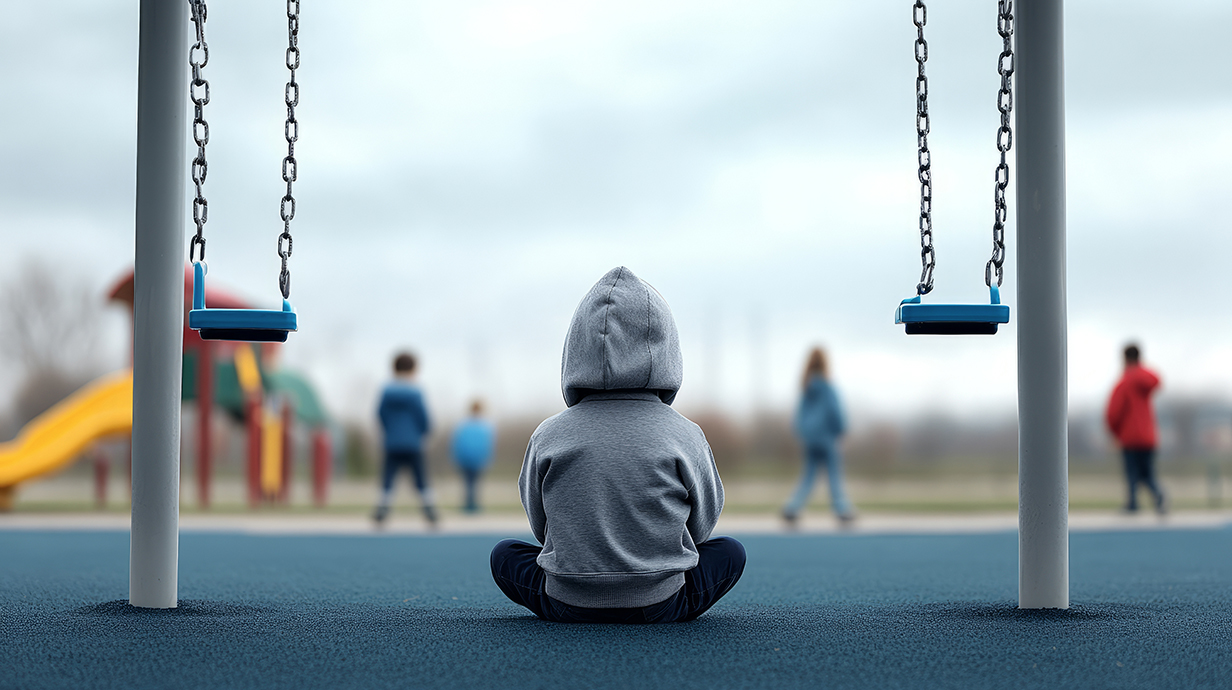Study Finds Community Violence Exposure Influences Behavior in School
UM researchers seek solutions for children facing violence in their communities

OXFORD, Miss. – Children sometime misbehave at school for a variety of reasons. But new research from the University of Mississippi sheds light on how exposure to violence outside of school may lead some children to act out in the classroom.
Abigail Novak, assistant professor of criminal justice and legal studies, and Rebekah Reysen, a second-year doctoral student in the Department of Criminal Justice and Legal Studies, published research in the Journal of School Health examining community violence exposure and fear in schools, focusing on the impact on younger children.
"A lot of qualitative research with adolescents suggests that kids who are exposed to community violence are afraid in all aspects of their lives," Novak said. "Usually, they're kind of afraid or hyper vigilant, constantly monitoring their surroundings or being concerned that something might happen.

"This is partly why kids carry weapons to school: because they're afraid something might happen on the way to school or in school. They're in this constant fight-or-flight mode."
The researchers used data from five sites across the country that is not tied to specific school districts. Children were sampled based on being at risk for child maltreatment, as identified by social service or medical providers, rather than their school placement.
As a result, the data generally represents lower-income families and does not include information about specific school districts.
"Kids who see violence in their communities may bring externalizing behaviors into the classroom – things like aggression, hyperactivity, difficulty sitting still, temper tantrums or disproportionate reactions like crying easily," Novak said. "These behaviors can lead to suspensions."
According to the 2025 School Counselor Report, more than 56% of counselors manage caseloads greater than 300 students, exceeding the 250:1 ratio recommended by the American School Counselor Association.
"I think school counselors do an excellent job of trying to manage really high caseloads and also understand that trauma is going to manifest itself in things like externalizing behavior," Reysen said. "They're little bodies trying to cope with something very stressful."
"Administrators who are especially supportive of their school counselors understand how trauma can impact the classroom, students' academics and their behaviors within the classroom."

This research emphasizes the need for schools to address the issue of trauma and its implications for learning, behavior and school safety. At the same time, schools need to have creative responses to behavioral issues, rather than punitive measures, while highlighting the importance of school counselors and mental health support for affected students, Novak said.
"Minoritized populations are more likely to live in communities with violence exposure, and this is due to all kinds of structural policies enacted at state, federal and local levels for centuries – things like redlining and resource allocation," she said.
Minoritized students, who often live in marginalized communities, are more likely to attend under-resourced schools, which may not have the tools to provide school counselors or mental health assistance, she said.
"Schools often end up suspending children because they might not have the resources to cope with kids exhibiting high levels of behavioral needs," Novak said. "At some point, suspending the child becomes the most efficient solution, but not necessarily the most effective for the child's long-term well-being."
Measures commonly taken by schools, such as school safety officers, cameras and metal detectors, may give the appearance of safety but don't actually increase school safety, Novak said.
"They're mostly 'fixes' that grown-ups impose because the grown-ups think they're going to make the school safer," she said. "When kids feel safe at school, they're more likely to engage positively, bond with the school and develop essential skills like reading on grade level."
"This isn't just about making schools look safer with adult-driven measures; it's about supporting students so they truly feel safe, especially from a young age, because we know many kids currently don't."
Top: Children can feel isolated and fearful when they are exposed to violence in the community, leading to behavior problems in school. A UM study examines how such exposure relates to school suspension, with fear in schools and teacher-reported behavior playing key roles. Adobe Stock photo
By
Jordan Karnbach
Campus
Office, Department or Center
Published
October 21, 2025
